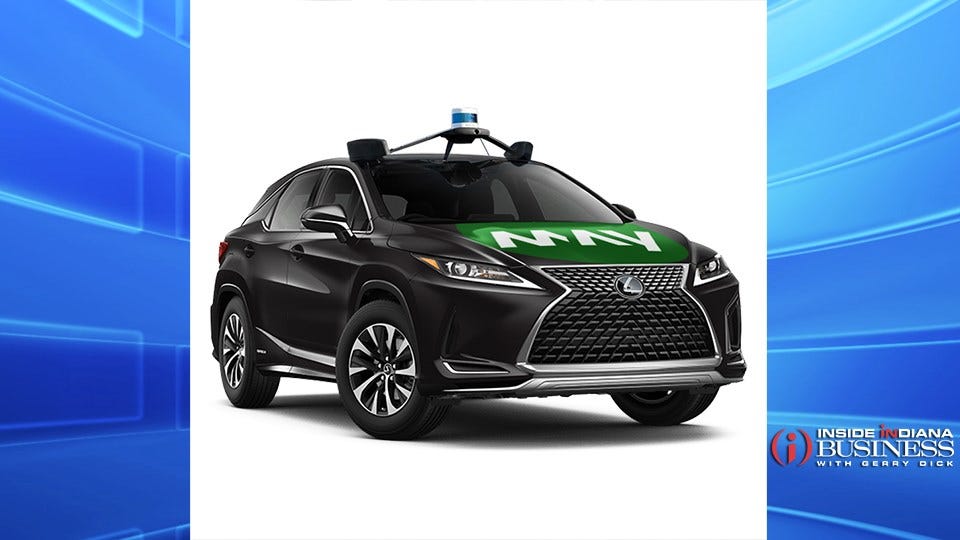Autonomous Shuttle Service to Be ‘Learning Opportunity’
 (photo courtesy of May Mobility)
(photo courtesy of May Mobility)
Subscriber Benefit
As a subscriber you can listen to articles at work, in the car, or while you work out. Subscribe NowThe field engineering manager for Michigan-based May Mobility says a recently-launched autonomous shuttle service in downtown Indianapolis will serve as a learning opportunity on both technological and sociological levels. The 12-month pilot program was established in partnership with the Toyota Mobility Foundation, Energy Systems Network in Indianapolis and the Indiana Economic Development Corp. The program provides a free shuttle service that follows a pre-determined route with nine designated stops in downtown Indy and on the IUPUI campus.
Jay Miles with May Mobility says the program will give residents more exposure to autonomous technology.
“Municipalities [and] public agencies are really interested in how the public perceives AV tech, how they interact with AV tech, so that they may be better equipped to deploy that technology to solve their own transportation problems,” said Miles.
The service features five Lexus RX 450h vehicles and one wheelchair-accessible Polaris GEM shuttle equipped with autonomous technology from May Mobility. Each of the designated stops is identified by a sign that includes route information and a QR code that users can scan to learn more about the technology and the shuttle route.
The shuttles arrive in 10-15 minute intervals. The partners say the route was designed to connect from the Vermont Station along IndyGo’s Red Line to areas west of downtown, and circles the IU Health University Hospital and Riley Hospital for Children at IU Health campuses.
Miles says the partners want to reiterate that the service is not meant to eventually become a replacement for other forms of transit, but serve as a supplementary service that is more more sustainable and efficient that a private rideshare service like Uber or Lyft.
“We really aim to do that sort of first-mile/last-mile transit, particularly in markets like Indianapolis and throughout the Midwest,” he said. “We’re a company that’s based in southeast Michigan and we’ve operated in Michigan and Rhode Island, to name a few places. We deal with weather and for anyone who’s lived in the Midwest, that half-mile walk between the IndyGo Red Line station and the IUPUI campus can be absolutely brutal when it gets to late January, early February. But, something like an Uber or Lyft might not be efficient.”
The downtown Indy service will run until mid-November, at which time the second phase of the pilot program will begin in Fishers.
Miles says, in addition to gauging how residents and city officials react to the service, the pilot will allow May Mobility to evaluate ways to improve its technology and make it more efficient for users.
“Every market’s different and as we deploy, what we’re able to do is we are able to gather data and information on how other actors in our environment – so, other cars, pedestrians, bicyclists, people riding scooters – how they interact with an autonomous vehicle so that we understand what we need to do improve our technology to be a better citizen on the road. We are also understanding more of what our customers’ needs might be.”
Miles says the goal is to extend the service beyond the 12-month pilot and potentially expand its reach.
“Because we are a turnkey transportation service provider, we are hiring people who are working full time there in Indianapolis. So, it’s in the interest of us and we think in the interest of the community to find ways to build sustainable transportation solutions. We want to use this 12-month period that we’re going to be in operation to continue to have productive conversations with our partners…to understand how we might deploy our tech to continue to solve problems there in Indy.”
The pilot program is part of TMF’s Together in Motion Indiana initiative, which was established to foster innovation and propel research and development in advanced mobility technologies throughout the state.
Miles says the program will give residents more exposure to autonomous technology.
Miles says the goal is to extend the service beyond the 12-month pilot and potentially expand its reach.
